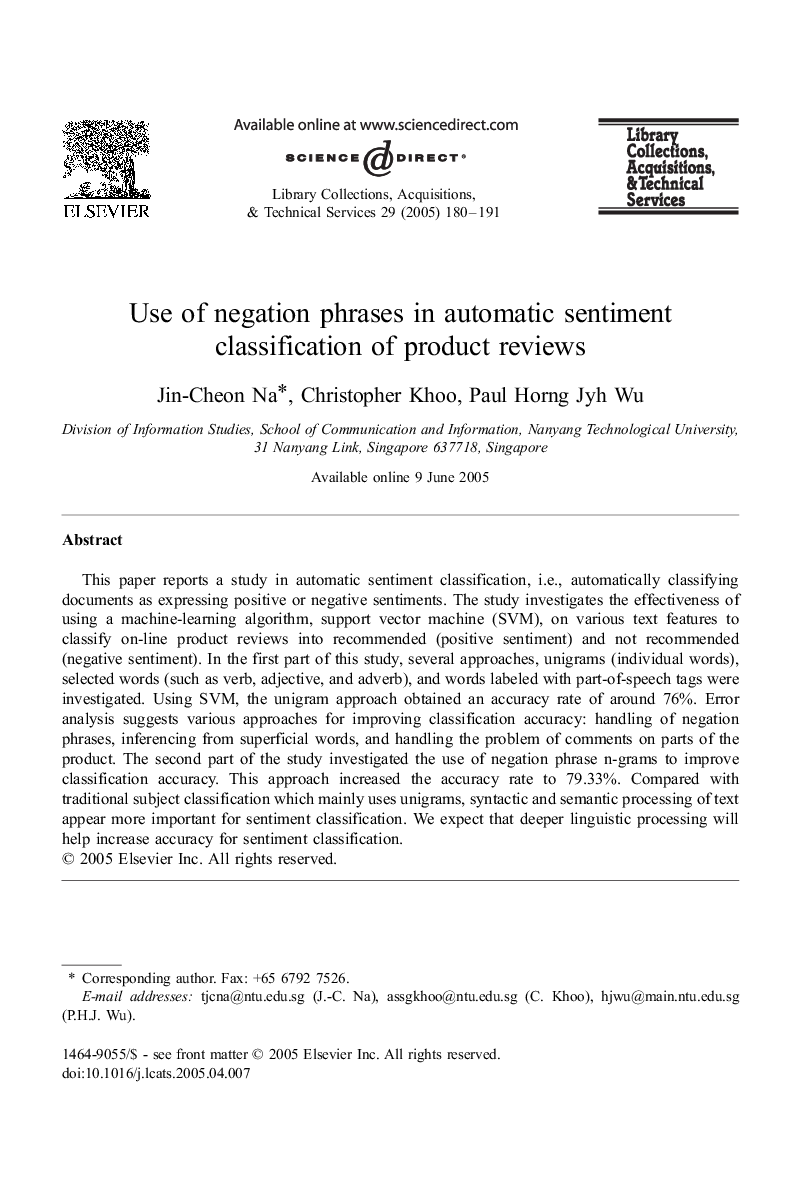| Article ID | Journal | Published Year | Pages | File Type |
|---|---|---|---|---|
| 10518663 | Library Collections, Acquisitions, and Technical Services | 2005 | 12 Pages |
Abstract
This paper reports a study in automatic sentiment classification, i.e., automatically classifying documents as expressing positive or negative sentiments. The study investigates the effectiveness of using a machine-learning algorithm, support vector machine (SVM), on various text features to classify on-line product reviews into recommended (positive sentiment) and not recommended (negative sentiment). In the first part of this study, several approaches, unigrams (individual words), selected words (such as verb, adjective, and adverb), and words labeled with part-of-speech tags were investigated. Using SVM, the unigram approach obtained an accuracy rate of around 76%. Error analysis suggests various approaches for improving classification accuracy: handling of negation phrases, inferencing from superficial words, and handling the problem of comments on parts of the product. The second part of the study investigated the use of negation phrase n-grams to improve classification accuracy. This approach increased the accuracy rate to 79.33%. Compared with traditional subject classification which mainly uses unigrams, syntactic and semantic processing of text appear more important for sentiment classification. We expect that deeper linguistic processing will help increase accuracy for sentiment classification.
Related Topics
Social Sciences and Humanities
Social Sciences
Library and Information Sciences
Authors
Jin-Cheon Na, Christopher Khoo, Paul Horng Jyh Wu,
